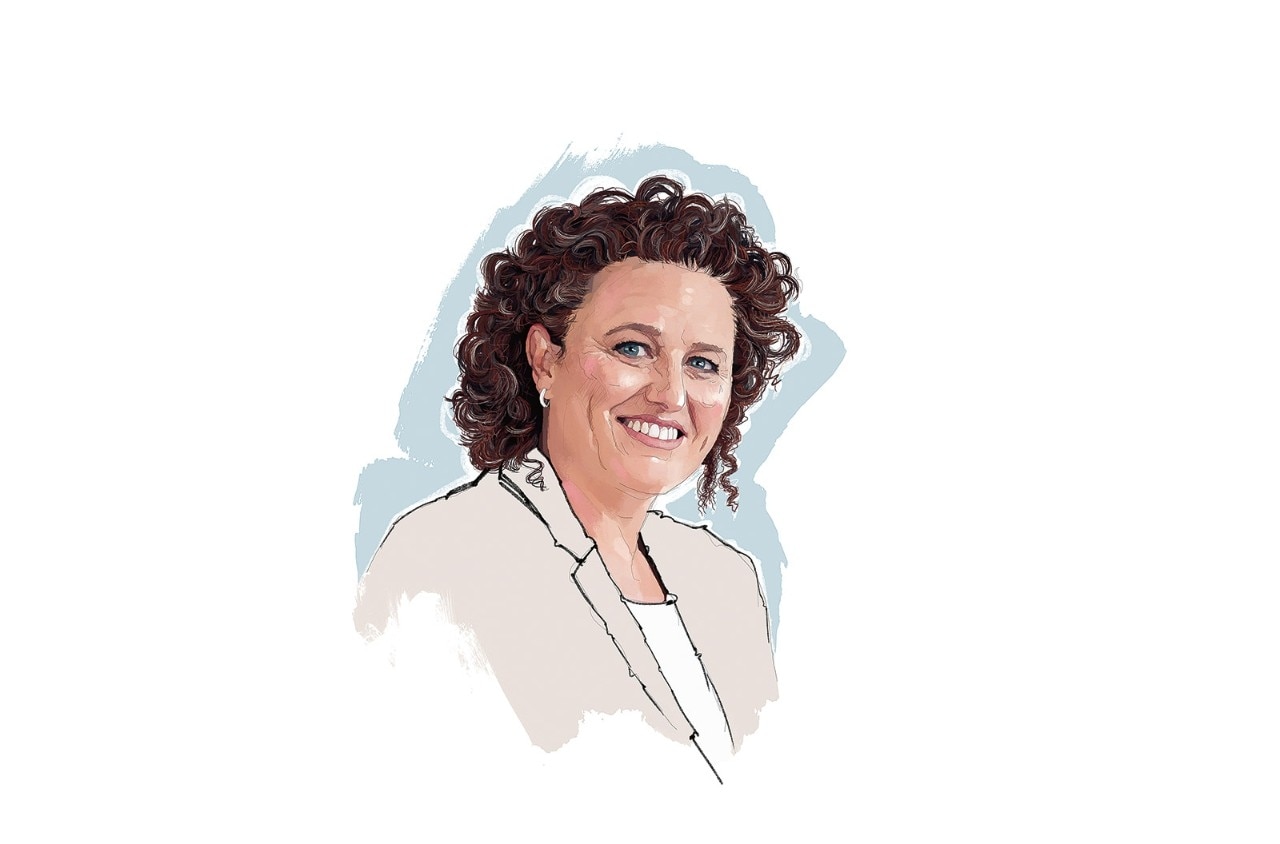Kirstin Ferguson on the Importance on Leading With Empathy

The leadership expert and author has one message for all of us: if you’re not leading with empathy, your days are numbered.
Current roles: Non-executive director, PEXA and Envato
Tenure: Two years
Age: 49
Previous roles: Deputy chair, ABC; chief executive officer, Sentis; director of corporate services, Norton Rose Fulbright; flying officer and flight lieutenant, Royal Australian Air Force.
How do you define good leadership?
For me, good leadership is if you leave a positive legacy in your wake. That can be in a moment, over a decade or across a lifetime. If you walk through life leaving a legacy that harms\ people, upsets them, puts others down or does anything not to propel others forward then I think you need to look at your leadership. Every moment is an opportunity to lead well.
And you believe that everyone is a leader, don’t you?
I do. It doesn’t mean we’re all CEOs – that would be chaos – but we all play a leadership role in our lives. If you’re a single mum at home, you are leading your family. We saw nurses during the pandemic who were incredible leaders. They don’t have a big team of staff and a fancy title or a corner office but I don’t think anyone would disagree that they’re leading. We’ve all got different responsibilities but the words we use, the choices we make and the behaviours we exhibit or role model are all part of being a good leader.
How do you think leadership – and specifically what we want from leaders – has changed?
A good example is at Microsoft with its CEO, Satya Nadella. It went through a rebirth when he was appointed [in 2014]. Microsoft had a real dog-eat-dog, success-at-all-costs culture, particularly in the 1980s and ’90s. But Nadella has been quite open in saying empathy is a bottom-line value for the organisation. So one of the largest companies in the world is saying that it will make better profits if it leads with empathy with its customers and its staff. It’ll have a better brand and a better reputation. That’s a very different attitude.
Your book is called Head & Heart because that’s how you think we should all lead. Why do so many leaders struggle with the heart stuff?
At school, at university and in our jobs we’re not rewarded for leading with our heart. We’re rewarded for leading with our heads – the technical knowledge, the achievement of KPIs and all of those tangible things. You can be the most technically proficient person in an organisation but if you’re terrible at leading people and no-one wants to be in your team then you’re never going to be in those senior leadership roles – that’s my hope anyway.
Do you think there’s still a perception that leading with your heart makes you weaker?
That perception exists with people who don’t understand what it means to lead. It’s hard to lead with empathy all the time; it’s something you do need to work at. Being vulnerable is difficult, being self aware requires a lot of practice and being a humble leader is something that gets harder the more senior you become.
What’s the difference between humility and confident humility?
Confident humility is the sweet spot we all need to aim for. It’s that position between crippling anxiety or imposter syndrome and overconfidence or arrogance. Confident humility means that you understand you don’t have all the answers, that you need to seek out other people’s opinions and accept your own limitations.
Some leaders still struggle with not having all the answers.
And the extreme of that is the smartest person in the room idea, where you’re in a meeting with your team and you feel you have to answer all their questions; you need to be the one with the solutions. Confident humility is having the confidence to draw on others’ ideas and not see them as a challenge to your authority. It has a lot more nuance than either having all the answers or sitting there and not having any answers.
Why do you think people are fearful of leading with empathy?
Empathy is not about taking on the emotions of others or listening to stories that are challenging then being upset yourself – that’s hardly helpful. It’s being able to put yourself in the shoes of others and trying to comprehend what they’re feeling. It isn’t easy and it means accepting that your lived experience of the world isn’t the same as everyone else’s. Unless you can respectfully listen to and engage with positions that are different to yours then you’re unlikely to make the best decision you can – and you’re also unlikely to be able to lead people who are different from you.
And yet it’s so powerful.
Incredibly powerful and essential. Obviously, if you’re leading BHP, it’s impossible to know the lived experiences of 80,000 people but it’s understanding that you’re not representative of all those 80,000 people. So it’s the mindset of, “How will this decision impact people who aren’t like me?”, and seeking to find out.
We’ve been talking about the softer skills but we do need to lead with the head and the heart. It can’t be one or the other, right?
No. There are a lot of leaders – especially in the not-for-profit sector – who are heart-based leaders and feel it’s all that’s needed. That’s absolutely not the case. They’re not going to be effective in the work they do because you have to be able to use all the skills. You have to be able to read the room, be wise about risk-taking and the direction your decisions are going, be curious and technically capable. This is not about saying one or the other is good or bad; it’s saying that you have to be able to integrate both. So to the CFOs of the world who feel comfortable living in their heads, they need to start thinking about leading with their hearts. Equally, heart-based leaders must use their heads.
What’s the perfect balance? Is there a 60/40 rule, for instance?
Well, that’s the art. In some conversations you might just need a heap of technical skills. On any given day, we’re all going to be moving in and out of our heads and our hearts. But thinking that you can go to work and put your headbased leadership on and it’s going to be sufficient isn’t what it looks like to be leading in the 21st century.
How can leaders get more feedback on their performance when they’re surrounded by “yes” people?
If you’re surrounded by “yes” people, you need to change the dynamic. The people you want in your team are the ones who are prepared to give you feedback. That’s a unifying factor of the leaders I spoke to – they have people who are prepared to not pull any bullshit and give them feedback in a constructive way. But leaders need to ask for it. And when you ask for it, listen respectfully and never question the feedback. It doesn’t mean you need to act on it and it doesn’t mean it’s necessarily correct but it is something that’s an important issue for that person. If it’s valuable, which it generally will be, go back a couple of days later, say thank you and show them how you’re changing.
I loved Salesforce CEO Pip Marlow’s discussion with you about how she asks junior staff members for feedback.
She was upfront in saying it’s quite difficult. When you do it the first time, they’re going to say, “Oh no, you’re great.” That’s just the power dynamic. But she makes an effort to acknowledge that’s what’s happening and then say, “Okay but next time here’s a specific thing I’d love you to look out for.” Any time you ask someone and empower them in that way, they’re more likely to give you helpful, targeted feedback. But you must – must – make it a safe environment for them.
So how do I know if I’m a head-based or a heart-based leader?
I wanted to make this interactive so I built a scale in conjunction with QUT [Queensland University of Technology]. It ranks the eight attributes and then gives you a moment-in-time indication of where your strengths are and which attributes you tend to default to.
What’s one piece of advice you’d give a brand-new CEO?
Remember you don’t need to have all the answers on day one. Spend a lot of time listening. And bring the leader you are at home to work.

Start planning now
SEE ALSO: Mark Rigotti on What It Takes to Be a Successful Leader
Image credit: Marc Némorin


